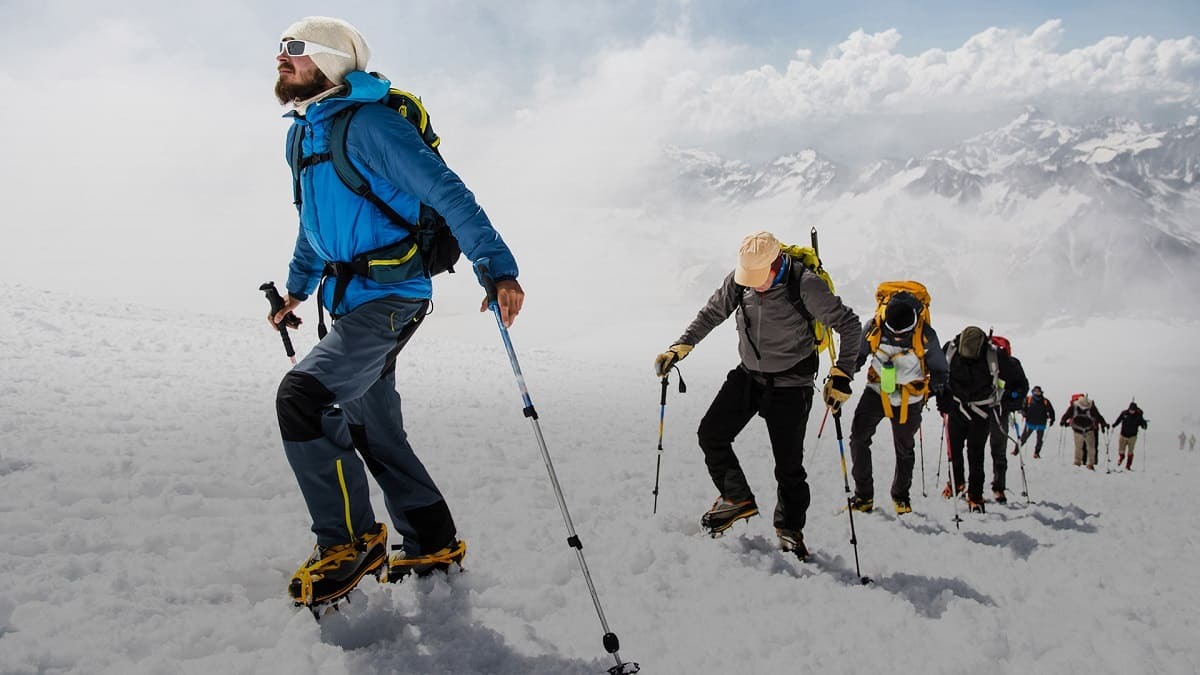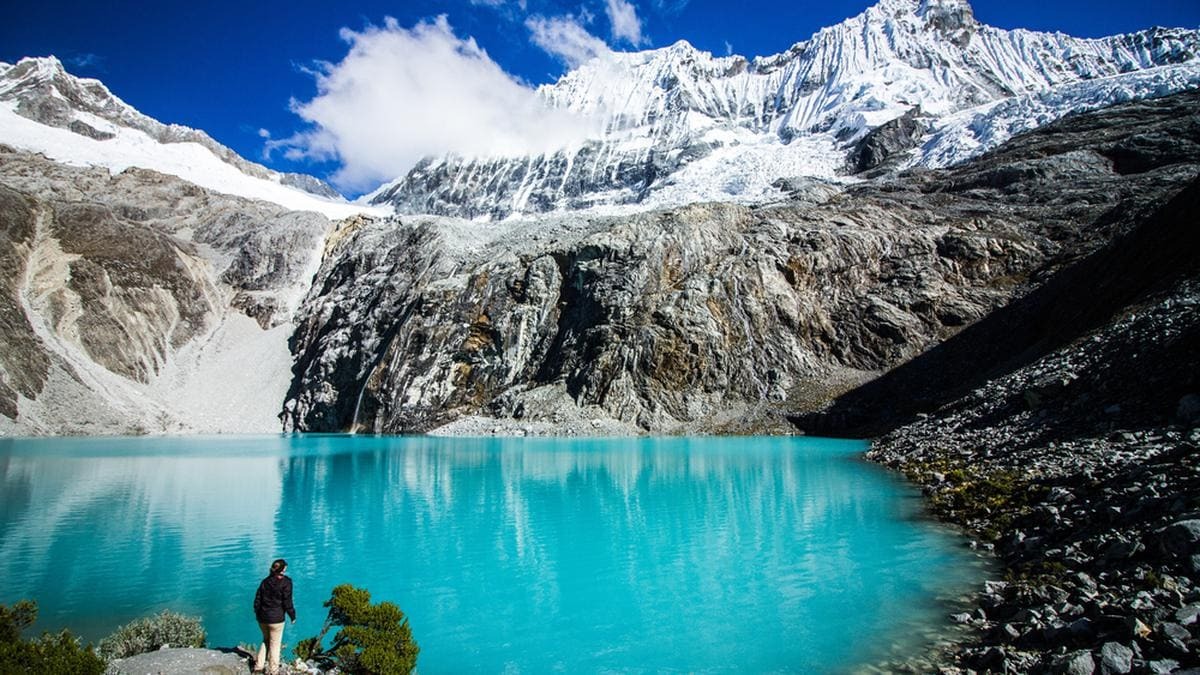Ancash: The mirror between two mountain ranges

Guarded by the Black and White mountain ranges, Áncash is the right place to connect with the Peruvian Andes and its ancient history. In this region to the north of Lima, mountaineering and trekking lovers will enjoy like nowhere else on earth: here is the mythical Callejón de Huaylas and it is where you find the beautiful Llanganuco Lagoon; we are talking about the cradle of the Chavín culture and its legacy, which can be witnessed to this day. Áncash has a lot to offer and travelers, adventurers and tourists, even more to discover.
The department of Áncash borders to the south with Lima, the capital of Peru. Despite having a rugged geography, it is not difficult to get to this region: you can do it by bus or a private vehicle -about 8 hours of travel, approximately- or by plane, to Huaraz (capital of Ancash), where the trip it only lasts an hour.
Landscape Beauty
Another characteristic that makes this destination attractive is that it has access to the sea, where the city of Casma stands out for its calm beaches and archaeological sites such as Sechín, Chanquillo, Las Haldas and Mojeque, or Chimbote with its important port, considered a of the cities with the highest rate of commerce and population in the entire region. However, the treasures of Ancash that attract the most attention are hidden between mountains, in the heights.
For example, the Callejón de Huaylas is the living portrait of what was once one of the routes by which the Inca empire moved. The also known as Valle del Santa is a narrow and elongated road that took its shape thanks to the route of the Santa River (from where its name comes), which is born from the waters of the Conococha lagoon. Sheltered by the Cordillera Negra (west) and Cordillera Blanca (east), this mountain range offers lovers of adventure sports the ideal place for trekking.
In turn, while you take long walks, you will be surprised by the landscapes that you will see: large clusters of earth and stone with brushstrokes of snow on their peaks, adorned by vegetation and wildlife that live in harmony with the diverse and magical towns that you will find. for your tour. And, as if that were not enough, this area also has pre-Hispanic archaeological remains, such as the Huilcahuaín archaeological site, one of the administrative centers of the Huari culture.
The waters of the Áncash lagoons seem like an extension of the sky, since you could easily confuse these aquatic accumulations with a mirror. The Huascarán National Park, declared a Natural World Heritage Site, the enigmatic Chavín de Huantar archaeological complex, which served as the religious and administrative center of the Chavín culture, where the famous nail heads or the monolithic Lanzón are exhibited, considered a sacred idol for the Huari ethnic group. This is just a sample of the various adventures that exist, for all tastes. So there are no excuses: there is a diverse hotel and tourist offer, so that no one is left wanting to know and discover the beauty of Áncash.
Get to know the best tourist places in Ancash
In Áncash you will find snow-capped mountains, lagoons, valleys and beaches that will impress you. Venture out to try the trekking circuits (hike), go through its geography on a mountain bike, enjoy nature, beautiful lagoons and snow-capped mountains that will captivate your senses. An infinity of possibilities await you. Enjoy its festivities and see how the streets of this city fill with color that gathers the tradition and the present of its inhabitants. Do you want to live this adventure?
Huaylas Alley
It is made up of magnificent towns along the 180 km of inter-Andean valley that it forms. It starts at Laguna Conococha at 4100 m a.s.l. n. m. and ends at the Cañón del Pato. In addition, it presents a diversity of microclimates.
Casma
Town that protects incredible archaeological monuments such as: Sechín, Las Aldas and Chankillo. In addition, its beaches are another of the main attractions, highlighting: Tortugas, Huaro and Gramita.
Chacas
Land of beautiful lagoons with crystal clear waters, where the highest tunnel in this part of the world is also found. It also has several museums, which show the art of this great town.
Chiquian
Known as the mirror of the sky, it is a town that fuses the ancient with the Republican era and with beautiful Andean landscapes. Rich in cheese production.
Huaraz City
A living sample of the pre-Hispanic and colonial, the city is home to various attractions that are wonderful. A combination of history, faith and nature.
Archaeological Monument of Chavín and National Museum of Chavín
It is the main temple of one of the most important cultures of the pre-Inca era. Its architectural distribution, statues and great conservation amaze.
Huascaran National Park
It is the highest chain of tropical mountains in the world and one of the areas with the greatest biological diversity in Peru. This earthly paradise is surrounded by impo0sing glaciers that bathe the mountain range.
Ancash Beaches
This region has spas that are a delight during the summer. Huarmey, Casma, Samanco, Nuevo Chimbote, Chimbote and Coishco; are the places that offer true marine paradises.
Willcahuain and Ichic Willcahuain Archaeological Complex
This is located in the district of Independencia, in the province of Huaraz. That is the product of the legacy left by the Wari culture, although it has two dating dates. Willcahuain is a mausoleum that is very close to the residential area of ​​the complex; In this one stands out a building that is known as the Main Building and that reaches three floors.
Waullac Archaeological Complex
It is located in the district of Nepeña, which is part of the province of Santa. This may have been built in the mid-6th century AD. and would have links with the Recuay culture. Its building purposes are clearly funerary.
Las Aldas Archaeological Complex
It is located in the district of Casma. This would have presented at least three construction periods, the oldest dating from the 17th century BC.
Cerro Sechín Archaeological Complex
It is located in the district of Casma. This presents an approximate antiquity of 1,600 years before our era and in it there are seven buildings made of adobe and that are presented in a conical shape.
Tumshukaiko Archaeological Monument
​​This is located in the district of Caraz and is considered one of the 14 oldest civilizations in America. The main monument is surrounded by three smaller buildings, the first one hundred meters to the East and the other two to the South.
Archaeological site of Pashas
It is located in the district of Pallasca. It is thought that it would be linked to the Recuay culture. It is made up of four mansions, which are in themselves buildings of complex architecture, inside which there are chambers.
Punkurí Sanctuary
It is located in the district of Nepeña. It is not yet known exactly what culture was the one that built this sanctuary that is also known as the Temple of the Puma because of the sculpture of said animal found in the temple.
Cueva de Guitarrero
It is an archaeological site that is located within the district of Mancos, in the province of Yungay. The cave would have been initially inhabited during the Lithic period, although it is also thought that it was the living space of the first farmers in the country. This has a residential age of 12,560 years.
The archaeological complex of Mojeque (or Moxeque) and Pampa de Llamas
It is a housing complex that is located in the district of Sector San Rafael. This would have been initially built in the 19th century BC. and inhabited until the middle of the 10th century BC.
La Galgada Archaeological Site
It is located in the district of Pallasca. This is an archaeological complex for ritual purposes built in the middle of the year 27000 and 2000 before our era.
Citadel of Pañamarca
It is located in the district of Nepeña. It dates from the 6th century AD. and possibly it was built by settlers of the Moche culture. In this you can see two pyramids, one of which reaches five meters high.
Mesapatac Lithosculptures
In this one are found lithosculptures dating from the Late Archaic between 3000 and 1800 years before our era. Initially there were three in the area, but two were removed, which remains presents complex shapes in its engravings.
In addition to the above, the department of Ancash also has valuable ecological sites, among which we can mention:
Laguna Churup
It is located a few kilometers from Huaraz. At a height of 4,450 meters above sea level. It has turquoise waters, it is also one of the most visited in the region, which can be accessed after an entertaining walk.
Llanganuco
This is mainly made up of two lagoons: Chinancocha and Orconcocha, which are fed by the surrounding snow-capped mountains.
Laguna Parón
The Parón lagoon is located in the Callejón de Huaylas. The beauty of the Parón lagoon is manifested in the impressive turquoise color of its waters, in whose mirror the prominent mountains that surround it and that reach 6,025 meters above sea level are reflected. The site is attractive for trekking as well as mountain climbing.
The department is also interesting for the festivities that it presents, among which the following stand out:
Anniversary of the province of Huaraz
Which presents July 25 as the central day. Where a series of activities such as marches or parades are carried out by students from schools in the area, public and military institutions, as well as the raising of the national flag in the Plaza de Armas. This day closes with a colorful parade by the residents of the Callejón de Huaylas.
Adventure Festival
It is an event that has a movable date, but that brings together all fans of adventure sports who take advantage of the riches that the province presents for this type of tourism.
You can find some tours at:
- Machu Picchu Travel
- Machu Picchu - Cusco City Tour
- Cheap Inca Trail Tour
- 2 Day Inca Trail with Camping





